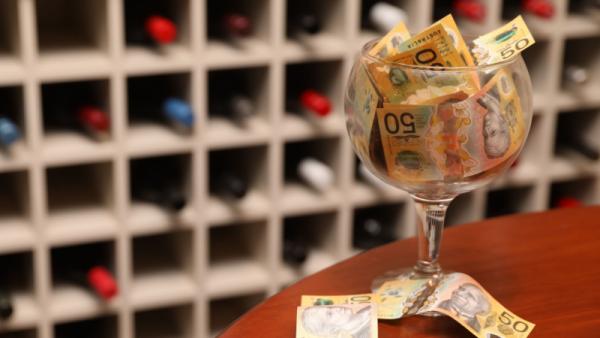Australia’s trade ties with China show there’s no need to throw the baby out with the bath water
LBeddoe / Shutterstock

James Laurenceson, Director, Australia-China Relations Institute, University of Technology Sydney |
This article appeared in the South China Morning Post on September 21 2022.
For those wanting to instil a view that economic exposure to China is dangerous, the Australian experience has become Exhibit A.
During 2020, Beijing unleased a campaign of trade disruption in response to political disputes with Canberra that affected Australian exports worth around $A20 billion (US$13 billion). All of the sanctions remain in place.
With this as background, an international audience might be surprised by developments over the past week.
It began with the Australia China Business Council (ACBC) and the Australian Chamber of Commerce in China issuing a joint press release on September 13 to ‘reaffirm their commitment’ to engagement with China, adding they were developing a programme of ‘high level and industry focused delegations from each country to the other as soon as travel can safely resume’.
The next day, after the new Chinese ambassador, Xiao Qian, had delivered an address at the ACBC’s Canberra Networking Day, the organisation’s president, David Olsson, remarked, ‘we are in a good place’.
Ambassador Xiao emphasised that China wanted to join Australia in the Comprehensive and Progressive Agreement for Trans-Pacific Partnership, and flagged the possibility of taking the China-Australia Free Trade Agreement ’to a higher level’.
The Australian business community, he said, had an ‘important role’ to play in putting the Australia-China relationship ‘back on the right track’.
This was despite the new Australian government that came to power in May sticking with the same policy position towards China as the previous one.
At a welcome dinner the evening before, Australia’s assistant minister for foreign affairs, Tim Watts, hadn’t minced words when describing Beijing’s sanctions as ‘unfair’ and ‘unjustifiable’.
But like Xiao, Watts praised the business community for ‘doing important work’ and made clear that business relationships with China were seen as ‘complementary’ to the government’s efforts to stabilise the broader relationship. He encouraged those in the audience to ‘stay engaged in the China market, while accounting for risk’.
The message that Watts delivered was a bipartisan one. In March, even in the midst of running a re-election campaign that hyped up the China threat, then-prime minister Scott Morrison assured the business community that despite the breakdown in official relations, ‘ongoing engagement between private industry and business with markets like China is very important and I would continue to encourage that’.
A poll of public opinion published in May by the Australia-China Relations Institute provides the explanation: less than 20 percent of Australians disagreed with the proposition that ‘the Australian government needs to be supportive of having closer economic ties with China’.
The economic complementarities between Australia and China remain firmly in place and continue to drive trade in spite of Beijing’s sanctions. In fact, last year the value of both Australia’s exports and imports with China hit a record high – a combined total of $A282 billion (US$190 billion).
This year, imports are on track to achieve another new record, while exports are likely to finish at their second-highest level ever.
Though recent years have seen a low ebb, a new book by University of Sydney historian James Curran argues that volatility rather than stability has been the norm between Canberra and Beijing since diplomatic ties were established in 1972. Yet despite this, an analysis published last month in China Economic Journal shows that with only a few exceptions the impact of this volatility on the value of Australia’s exports to China has been insignificant.
The real world that Australian businesses must operate in differs from the black and white portrayals – US ‘good’, China ‘bad’ – regularly found on the opinion pages of major Western media outlets.
Consider the trans-Tasman dairy manufacturer, A2 Milk. While wishing to diversify sales of infant formula by increasing its exposure to the US, that’s impossible as long as American authorities continue to stall on approving their application to supply the market. Meanwhile, Chinese authorities have just renewed A2 Milk’s registration to supply the same product to their market.
Australian businesses have also proven adept at managing China risks. In November 2020, Treasury Wine Estates – the owner of the premium Penfolds brand – was hit with punishing 176 percent ’anti-dumping’ tariffs by Beijing, along with other Australian wine producers.
While Canberra pursues the case through the World Trade Organization, Treasury Wine Estates has maintained its connections to the lucrative China market by sourcing more of its offerings from California and boosting its investments in the domestic wine-growing region of Ningxia.
Meanwhile, in terms of building trade architecture, a solid case can be made that Canberra has shown greater common cause with Beijing than Washington. While the US eschews trade agreements, both Australia and China are enthusiastic members of the Regional Comprehensive Economic Partnership, enacted at the beginning of this year.
And after the US rendered the WTO’s dispute settlement process dysfunctional more than two and a half years ago, both Australia and China are supporting a temporary work-around.
Australia’s experience does indeed serve to remind other countries that Beijing is willing to weaponise trade in pursuit of political and strategic objectives. But it also shows that there’s no need to throw the baby out with the bath water: leaning into engagement rather than driving a ‘decoupling’ is generally the best response.
Author
Professor James Laurenceson is Director of the Australia-China Relations Institute at the University of Technology Sydney.

